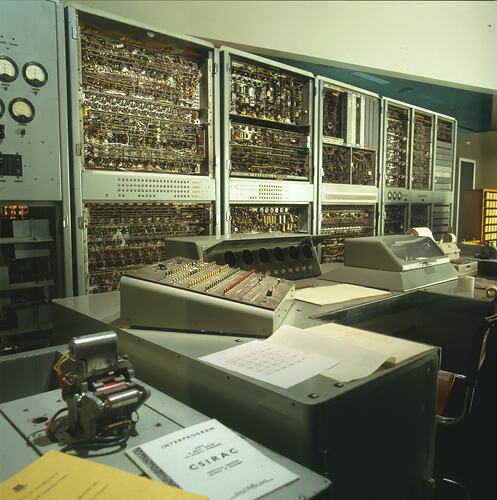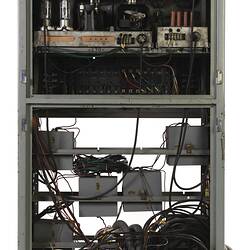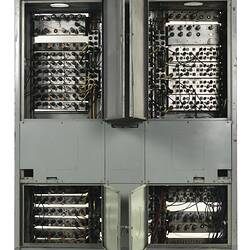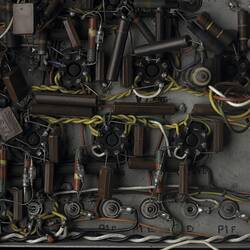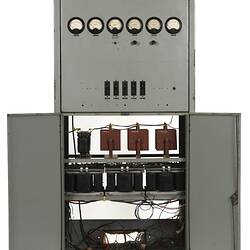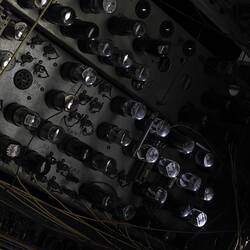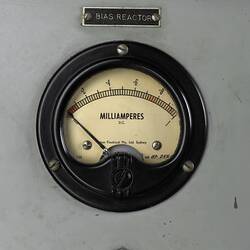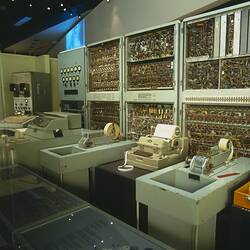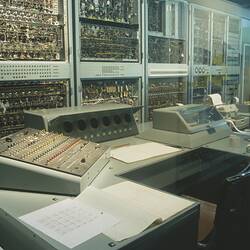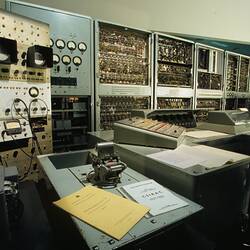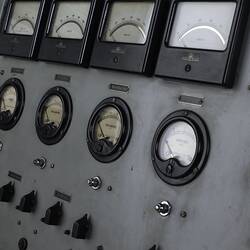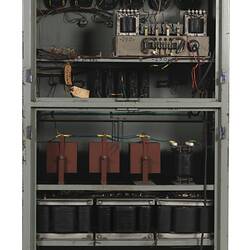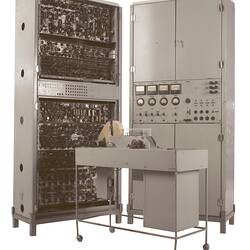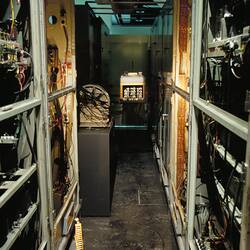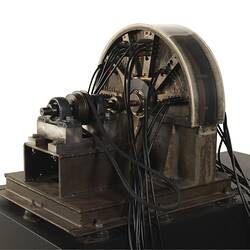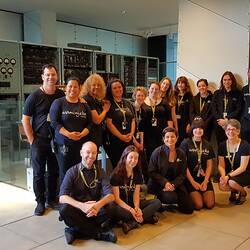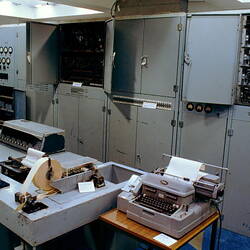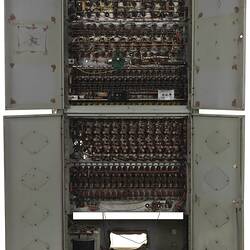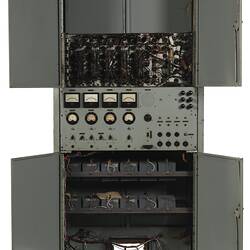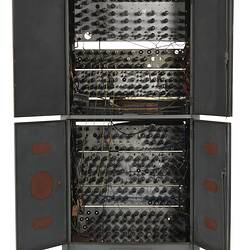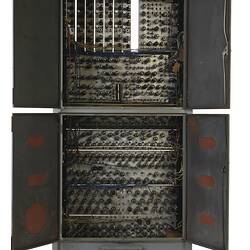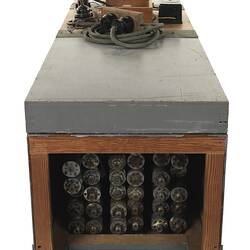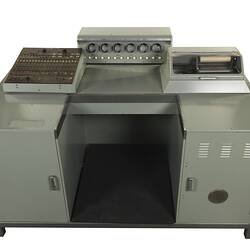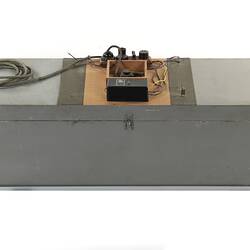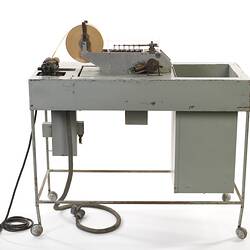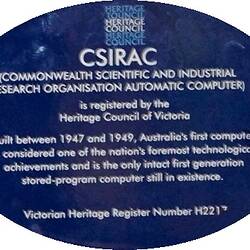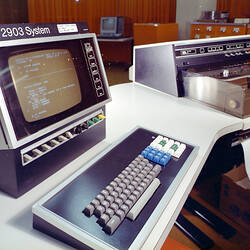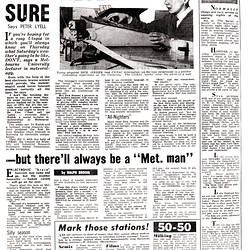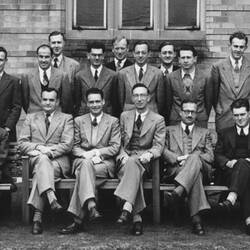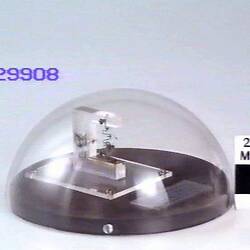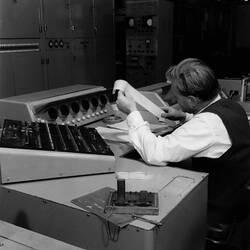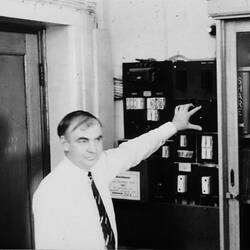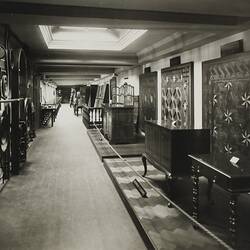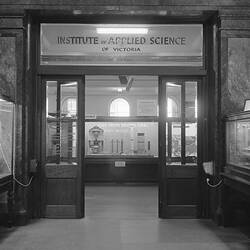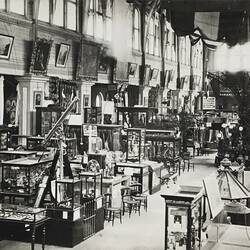Summary
CSIRAC main-frame thermionic valve (vacuum tube) technology stored-memory digital electronic computer. 768 words storage in mercury delay lines, 20 bit words. Comprises multiple metal cabinets containing power unit, CPU and processing circuitry, printers, storage delay lines, hard disk drive storage unit, paper tape readers and punches.
Originally known as CSIR Mark 1, CSIRAC computer was designed in 1947 by Trevor Pearcey and Maston Beard at the Division of Radiophysics, of the Council for Scientific & Industrial Research (CSIR - today known as CSIRO). Construction was commenced in Sydney in 1948, and the first program was run in 1949. The machine was in full operation by 1951. It embodied many features novel at the time and was able to operate more than 1000 times faster than the best mechanical calculators. CSIRAC is generally acknowledged as the first stored-memory electronic computer in Australia and it today the world's only complete surviving first-generation digital electronic stored-memory computer.
In 1955, the computer was transferred to the University of Melbourne, Computation Laboratory, where it was renamed CSIRAC and officially inaugurated in June 1956, operating a free computing service for university researchers and various CSIRO Divisions, Government departments and authorities and a range of private organisations, continuing to operate until November 1964. The date range (1949-1964) is given to indicate that changes were made to the structure and circuitry over the period of CSIRAC's working life.
CSIRAC was donated to the then Institute of Applied Science of Victoria (now part of Museums Victoria) in March 1965, and was initially placed in storage, before being transferred on long-term loan to the Caulfield Institute of Technology (later the Chisholm Institute of Technology), where it was on public display from 1980 to 1992. In June 1996, CSIRAC was temporarily moved to the University of Melbourne's Department of Computer Science, in Parkville, forming the centrepiece of a conference held to mark the 40th anniversary of the birth of digital computing in Melbourne, and remained on display for the following six months.
CSIRAC is listed on the Victorian Heritage Register (VHR H2217), and was awarded a National Engineering Heritage Landmark plaque by Engineers Australia in 2004.
In October 2000, CSIRAC was went on public display once again as part of the @digital.au exhibition in the Science & Life Gallery at the new Melbourne Museum in Carlton Gardens. In 2004, it was transferred to a smaller exhibition dedicated exclusively to CSIRAC within the same gallery, and in November 2010, the display was moved to west side of the Lower Ground Floor Entrance Lobby at Melbourne Museum. In November 2017, CSIRAC was transferred to Scienceworks in Spotswood, where it was initially held in temporary storage, before being placed on public display once again in June 2018.
Physical Description
CSIRAC at Melbourne consisted of two rows of cabinets, a control console, input and output devices, test equipment and an off-line paper tape editing area. There were nine cabinets, five in the front row and four in the back. Cool air was blown up through all the cabinets from the basement below. The auxiliary memory (disk drive) occupied the middle space that would have been occupied by a cabinet in the back row. The five front row cabinets contained (from left to right viewed from the front) power supplies, input and output circuitry, clock and control circuits, arithmetical circuits and memory control circuits. The four back row cabinets contained (from left to right viewed from the front) power supplies, auxiliary store control circuits, 'disk drive', auxiliary test power supplies and memory control circuits.
Significance
CSIRAC was the fourth stored program computer in the world and the first one in Australia. It is the only intact first generation computer left on the planet.
More Information
-
Collection Names
-
Collecting Areas
-
Acquisition Information
Donation from Commonwealth Scientific & Industrial Research Organisation (CSIRO), Frank Hirst - University of Melbourne (The), Mar 1965
-
Designer
Dr Trevor Pearcey, Mount Eliza, Greater Melbourne, Victoria, Australia, 1947-1949
-
Designer
Mr Maston Beard, Sydney, Greater Sydney, New South Wales, Australia, 1947-1949
-
Commissioned By
Division of Radiophysics, Council for Scientific & Industrial Research (CSIR), Sydney, Greater Sydney, New South Wales, Australia, 1947-1949
-
User
Commonwealth Scientific & Industrial Research Organisation (CSIRO), Sydney, Greater Sydney, New South Wales, Australia, 1949-1954
-
User
University of Melbourne (The), Grattan Street, Parkville, Greater Melbourne, Victoria, Australia, 1955-1964
-
Classification
-
Category
-
Discipline
-
Type of item
-
Overall Dimensions
2 tonnes (Weight)
One of the largest pieces of vacuum tube equipment ever constructed, its components cover 40 square metres. The two tonne (2,000 kg) weight is an estimate.
-
References
[Link 1]
[Book] McCann, Doug & Thorne, Peter. 2000. The Last of the First CSIRAC: Australia's First Computer. 196.
[Book] Doornbusch, Paul. 2005. the music of csirac. 101.
-
Keywords
